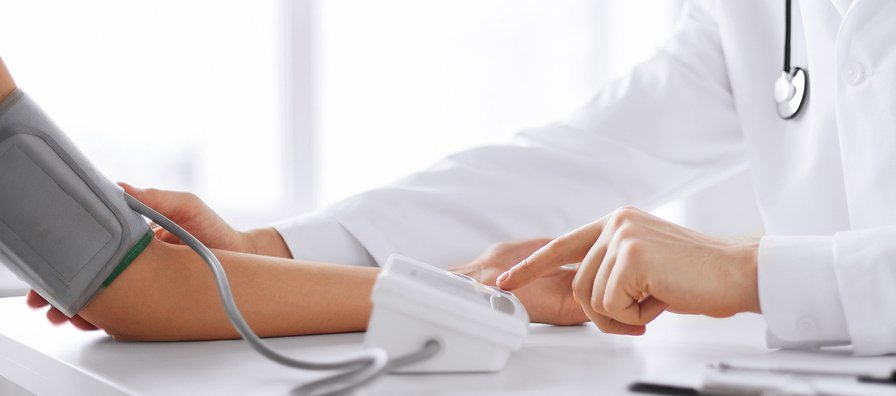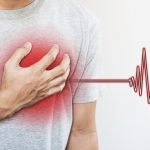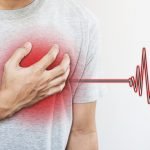We all know that high blood pressure is potentially dangerous. Hypertension is a risk factor for heart attacks, as well as stroke, cardiovascular disease, and kidney problems. Therefore, it’s essential to bring blood pressure down to normal levels to protect you from a range of health hazards. But now, new research suggests that when we lower blood pressure a little too much, it may also raise the risk of having a heart attack.
The study, which took place at Imperial College London in the United Kingdom, found that for individuals with coronary artery disease, reducing blood pressure to too low a rate through use of pharmaceutical medication may backfire and actually increase the chances of a heart attack occurring.1 Vidal-Petiot, Emmanuelle; et al. “Cardiovascular event rates and mortality according to achieved systolic and diastolic blood pressure in patients with stable coronary artery disease: an international cohort study.” The Lancet. 30 August 2016. Accessed 4 September 2016. www.thelancet.com/journals/lancet/article/PIIS0140-6736(16)31326-5/fulltext The subjects were 22,672 men and women from 45 countries around the world. All of them had a heart disease diagnosis and were taking prescription drugs to combat their hypertension.
The participants were tracked for approximately five years. Their medical records indicated that a blood pressure reading among these patients of more than 140/80 was associated with a higher heart attack and stroke risk—no big surprise. But readings below 120/70 were also shown to be linked with an increased likelihood of heart attack, hospitalization for heart failure, and even death. This is scary news since a blood pressure measurement below 120/80 is considered normal. This means that the low blood pressure levels that doctors are aiming to achieve through dangerous pharamcuetical drugs is the exact low blood pressure level that is putting patients at risk for another heart attack!
Blood pressure readings consist of the top number, or systolic pressure, which represents a measurement of the force of the blood as it hits the artery walls with each heartbeat, and the bottom number, or diastolic pressure, which represents the pressure in the arteries between heartbeats. This is important because hypertension is often asymptomatic but can contribute to heart and blood vessel damage, kidney problems, erectile dysfunction, memory loss, stroke, heart attacks, and more. Blood pressure readings of 120/80 and below are generally considered to be much healthier.
Nearly one-third of American adults have hypertension, according to the Centers for Disease Control and Prevention. Sadly, rather than trying to address the underlying causes, many physicians simply recommend taking a pharmaceutical drug every day to bring blood pressure rates down. Blood pressure that’s only a little on the high side was shown in a 2011 study at the University of California, San Diego to increase stroke risk.2 Lee, M; et al. “Presence of baseline prehypertension and risk of incident stroke.” Neurology. 28 September 2011. Accessed 5 September 2016. www.neurology.org/content/77/14/1330.abstract?sid=e9a278af-1740-4854-871f-8742f99c36d5 And as we see in the current study’s findings, reducing the blood pressure rate to the correct number is also hardly an exact science, and it places the patient in greater jeopardy not only for a heart attack but also heart failure and early death.
So, rather than more monitoring of individuals on blood pressure medicines, wouldn’t we be better off trying to reduce levels of blood pressure naturally? The risk factors for high blood pressure include being overweight or obese, smoking, and being sedentary—not to mention side effects from other medications and even some supplements. If people diagnosed with hypertension are willing to make some lifestyle changes, it’s entirely possible to lower blood pressure without taking any drugs.
Two of the most important factors are diet and exercise. Cut back on calories to lose excess weight, focusing on getting better nutrition by eating lots of fruits and vegetables, lean sources of protein, and unrefined whole grains—if you choose to eat grains at all. Supplement with proteolytic enzymes to reduce systemic inflammation and help remove plaque from the arterial walls. Start working out, even if you can only manage 15 or 20 minutes a day at first. Include a cardiovascular component such as walking or riding a bike to strengthen your heart and burn calories. A strength-training component is essential as well, as this will tone and develop your muscles, helping your metabolism operate more efficiently. And you might want to try meditation or some other stress reducing activity as stress is a known hypertension risk.
As you start losing weight and getting in shape, there’s an excellent chance your blood pressure will drop to where it should be. You’ll end up lowering your heart attack risk naturally, and you’ll have the added benefit of feeling better than you probably have in years.
References
| ↑1 | Vidal-Petiot, Emmanuelle; et al. “Cardiovascular event rates and mortality according to achieved systolic and diastolic blood pressure in patients with stable coronary artery disease: an international cohort study.” The Lancet. 30 August 2016. Accessed 4 September 2016. www.thelancet.com/journals/lancet/article/PIIS0140-6736(16)31326-5/fulltext |
|---|---|
| ↑2 | Lee, M; et al. “Presence of baseline prehypertension and risk of incident stroke.” Neurology. 28 September 2011. Accessed 5 September 2016. www.neurology.org/content/77/14/1330.abstract?sid=e9a278af-1740-4854-871f-8742f99c36d5 |












Consume 2 bananas can lower
Consume 2 bananas can lower your blood pressure naturally. Try this home remedies to live a little longer.